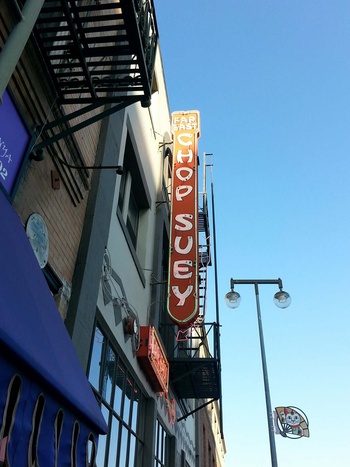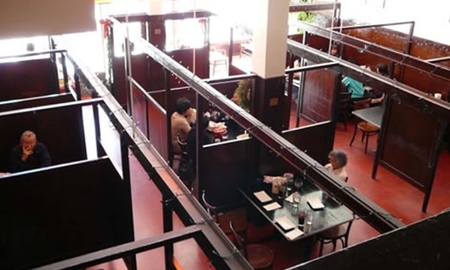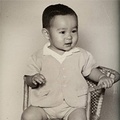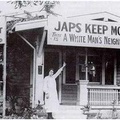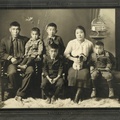Few places truly define the Japanese American experience in Southern California than “Chinameshi” and the Far East Cafe on First Street in Little Tokyo.
“Chinameshi,” chop suey, old style Cantonese—a style of cuisine that is truly American. Like pizza, it was “ethnic food” that was tailored to American tastes. Stuff that didn’t exist in the old country.
The Far East “flavor” was in many ways uniquely Japanese American. Chinese American immigrants came together with Japanese American immigrants to create dishes that became the stuff of legend in JA circles.
In 1935, the Jung family from Hoy Ping County, Kwantung Province, China set up shop in what was then “Bronzetown” or Little Tokyo district of downtown Los Angeles. The building at 347 East First Street was both restaurant and hotel (upstairs).
Four generations of Jungs (until their closing in 1994, due to damage from the Northridge earthquake) served up favorites like Almond Duck, Sea Weed Soup, Cha Shu Pork, and Shrimp in Lobster Sauce. And much more.
Salty. Greasy. And full of MSG (Ajinomoto). But who cared. It was so good. It was comfort food. And it was fairly inexpensive.
The Far East was more than just a restaurant. It was an integral part of the Japanese American community. Not just Little Tokyo, but most of Southern California.
The Far East was a hub.
A gathering place for wedding receptions, anniversaries, birthdays, and sadly, post-funerals. A place where families got together and shared off a lazy susan and talked into the night.
Embedded in the brown lacquered walls and room dividers are echoes of Issei broken English and the distinct rhythm of Nisei Japanese/English. “The pak kai is so oishii, honto ni.”
In 1942, Little Tokyo was evacuated—Japanese Americans were sent to internment camps. Upon their return in 1945, many JAs found themselves without any money and without a home. Some found temporary housing at the Koyasan Buddhist Temple across the street.
The Jungs allowed JAs to eat “on credit,” asking repayment only if they could. At the Far East, Chinese Americans and Japanese Americans were intertwined.
In the early years, Jim Crow laws barred Asian Americans from eating at certain restaurants. All were welcome at the Far East. There was a strong loyalty between the Jungs, their wait staff ,and their JA clientele.
For me, a fourth generation Japanese American, the Far East Cafe was an important part of my family. My mom and dad practically grew up there. They had their wedding reception in the upstairs mezzanine.
When asked where I wanted to have my birthday dinner, I of course said “Far East!”
Christmas, Easter, even Thanksgiving dinner were often spent with a helping of Pressed Duck, Pak Kai (Sweet and Sour Pork), and Pea Chow Yuk (stir-fried Snow Peas).
For me, Chop Suey was more ubiquitous than sushi and sashimi (raw fish). For one thing, sashimi was often expensive. Try shopping at Marukai and buy a small fillet of maguro (Bluefin Tuna).
Alas, the Far East is but a fond memory.
Oh, the building is still there; it’s on the Registry of Historic Places. I mentioned earlier in this piece, the restaurant was closed in 1994 due to the Northridge Earthquake. The building was severely damaged and sat vacant for nearly a decade.
In 2001, with donations to the Little Tokyo Service Center Community Development Corporation (LTSC), The Far East Cafe Building and Restaurant was fully restored.
In 2006, it was reopened (under new ownership) as the Chop Suey Cafe and Lounge.
Today, it’s now the Far Bar. As the name implies, it’s mostly a drinking establishment.
A popular one at that.
But gone is the old menu.
And perhaps a bygone cuisine. Tastes in food often change.
Though I’ll keep searching for my beloved Chinameshi.
What’s your favorite dish from the Far East Cafe? Cherished family stories? Pictures and memorabilia (gee, I wish I saved even a soup spoon from there). Got a recipe where you've “duplicated” those nostalgic flavors?
Drop me a line. I want to collect your stories for a book (e-book/printed).
In the meantime, I’m on the hunt for some place that serves up Almond Duck. Double the MSG.
* This article was originally published on the Nikkeisays blog on October 14, 2015.
© 2015 David Toyoshima


